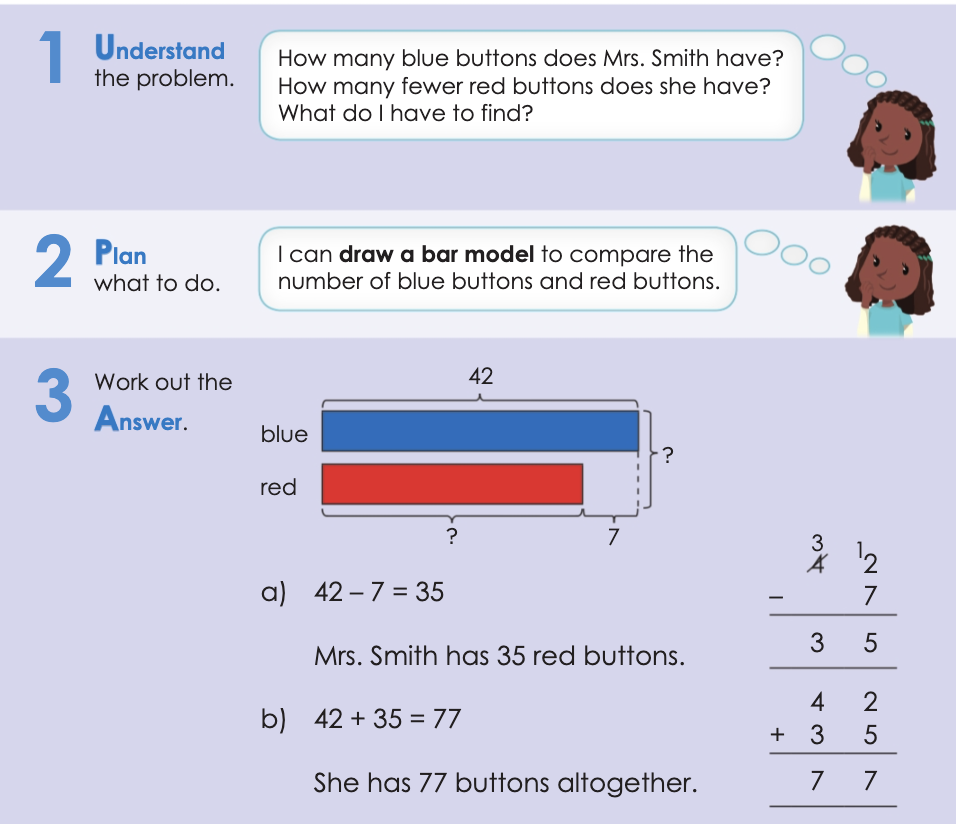This year, we've been working hard to implement a more structured approach to maths using the PR1ME Maths program, which I’ve found incredibly helpful for building strong number sense and step-by-step thinking in students. Each lesson scaffolds understanding clearly—Understand the Problem, Plan what to do, Work out the Answer—and students respond well to the predictable structure.
But I started to notice something. Despite the structure, many students were still getting stuck on multi-step problems, especially when the wording got tricky. Even with a model or clear number strategy, some students weren’t quite sure what was actually happening in the problem.
That’s when I decided to trial the 3 Reads Protocol alongside PR1ME.
What is the 3 Reads Protocol?
It’s a comprehension strategy borrowed from literacy and adapted for maths word problems.
1. What is the problem about?
(Just the context—no numbers yet. Are we talking about muffins? Trains? People?)
2. What is the problem asking?
(Focus on the question. What are we meant to find out?)
3. What are the important numbers or facts?
(What do we need to solve the problem? Which strategy might work?)
How Does This Compare to PR1ME’s Approach?
The PR1ME problem-solving routine (like the image above) follows a similar flow:
1. Understand the Problem; Students are prompted to ask questions:
How many blue buttons? How many fewer red? What do I need to find?
2. Plan what to do; They draw a bar model, or visualise with a known strategy.
3. Work out the answer They solve, step-by-step.
There are a number of similarities in each of the protocols:
- Encourage thinking before solving
- Focus on the story behind the numbers
- Encourage visual strategies like drawing or bar models
- Build mathematical language through questioning
But here’s the key difference:
👉 The 3 Reads Protocol slows down the reading comprehension process even more.
It makes students treat the problem like a piece of reading rather than just a maths equation hiding in a story. Strategies which can then be applied are to use manipulatives, or visualisation strategies like bar models that can help students turn a confusing question into a problem they can understand and solve without needing as much reading comprehension.
In practice:
In large group/class instruction, I stuck to the PR1ME structure, as it aligns with the scope and expectations of our program. The vocabulary and worked examples help all students—especially those who thrive with repetition and visual modelling.
We’ll continue using both. The PR1ME problem-solving routine is here to stay—it’s well-structured, scaffolded, and clearly links to our curriculum refresh.
But I see real value in making room for the 3 Reads Protocol in:
- Small group problem-solving
- Mixed-ability collaborative tasks
- Problem-solving challenges or rich tasks
In short:
We’re not replacing one with the other. We’re building a toolkit—and giving students more ways to understand, approach, and solve.
I am excited to see the results of this; we have had a very staggered end of term, but moving into the next term we will administer a Chapter Test which will require students to solve word problems; am unsure how well they will be able to independently apply the protocol. We will continue to build on this in Term 3.
If you’re noticing students can’t make sense of the maths problem even though they know the strategy, try the 3 Reads approach. Sometimes the barrier isn’t the maths—it’s the language.


No comments:
Post a Comment